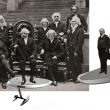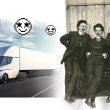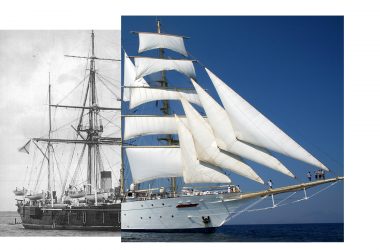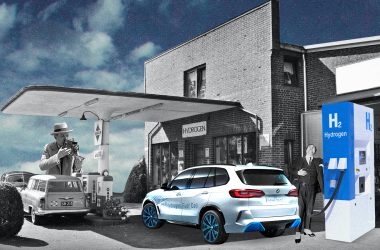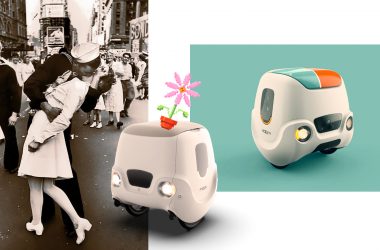You may well hear such a conversation in a few years. And there are good reasons for this: there is an actively developing industry of air transport, aircraft with vertical take-off and landing (VTOL). The second trend of our age that has captured the whole world is the electrification of everything that moves. It adds the word “electric” to the name — eVTOL.
Let’s analyze the pros and cons, as well as the characteristics and purpose of eVTOL.
eVTOL:
- does not require a runway — it would go well with an ordinary helicopter pad, and
- can operate in urban settings since, unlike a helicopter, it complies with an acceptable noise level. Two of these characteristics allow using eVTOL, for example, as an air taxi.
The downside of the craft is still a short flight time. Below we tell you that, on a single charge, you can fly for an hour, which is a record. But, for air taxis, you do not need an hour of flight time — it takes from a few minutes to a quarter-hour to fly from the city center to the airport:


The flight from Heathrow Airport to the business district of London will take 13 minutes (almost an hour and a half by car)
The flight from Heathrow Airport to the business district of London will take 13 minutes (almost an hour and a half by car).
In addition to air taxis, there is also an industry where eVTOL can be indispensable — it is emergency services where every minute and even second counts: ambulance, fire and search and rescue services.
And of course, for these vehicles, there is a large market of personal transport offered. Vertical take-off and landing significantly leveled down the requirements for the piloting art, so pilots with minimum training will be able to control the aircraft. However, there may also be fully automated eVTOL, and a pilot (in fact, a passenger) will only need to set the destination point. At least, the German company Volocopter has already introduced an autonomous aircraft for urban air mobility (UAM) and tested it in the field in Dubai.

One shortage, but a feature, is that many of eVTOLs discussed below, unlike helicopters, are not designed for long hovering. The energy in these aircraft, in the manner of speaking, is expensive and “heavy”, so for the horizontal flight, a wing lift is used, which allows saving on electricity consumption significantly. As a result, according to the manufacturers, eVTOLs are much cheaper to operate than helicopters.
Another feature of eVTOLs is, of course, safety. Manufacturers claim that all vital systems of their aircraft are duplicated and also have a self-monitoring system to warn of potential malfunctions even before they occur. The batteries are connected in parallel in such a way that if one or more of them fails, others can supply the motors with sufficient power to land safely. The same applies to the engines — a partial failure of the power unit, for example, one or two engines, will not cause disaster. Some manufacturers also equip vehicles with parachutes, but they can hardly help at low altitudes.
And yes, environmental friendliness. The electric aircraft is fully consistent with this trend of our age, although one may note that the electricity generation, as well as the battery manufacture, is far from an environmentally sound process.
What Does the Market Offer?
Several hundred companies have already entered the technology race, and some of them have already received pre-orders from operators. At the same time, the market is in its infancy. Manufacturers mostly introduce prototypes. Of course, there is a risk of business failure. Is it justified? It is hard to judge, but one thing is for sure: billions are invested not in start-ups but in companies that have already proven themselves in the aviation market and, in general, manufacture conventional aircraft but understand the eVTOL’s outlook.
Additionally, the legislation in the air transport industry is quite conservative (which is not a downside), the regulations do not yet have many requirements, so the manufacturers cannot boast of certificates of airworthiness. At the same time, a number of companies have already made progress in this. For example, Joby Aviation, let’s begin our journey from it.
Joby Aviation
Joby Aviation is an American company that is going to start commercial operation of the Joby S4 aircraft in 2024. To date, the company has entered the fourth and penultimate stage of eVTOL certification at the United States Federal Aviation Administration (FAA). The air carrier certificate is required to enable the company to use the vehicle as an air taxi in cities and towns throughout the country.
The S4 model showed a very satisfactory performance, reaching a speed of 321 km/h (200 mph). Even compared to conventional general-purpose aircraft, eVTOL offers surprisingly outstanding characteristics. For example, the cruise speed of the ubiquitous four-seat Cessna 172 is only 230 km/h (143 mph) and of the popular four-five-seat Cirrus SR22 is 339 km/h (211 mph).



Joby S4’s performance data:
- Maximum speed: 321 km/h (200 mph)
- Maximum range: 248 km (154 mi)
- Flight endurance: up to 1 hour
- Capacity: 5 seats (1 pilot and 4 passengers)
- Power unit: 6 motors
Vertical
The British manufacturer Vertical Aerospace has already received orders for 550 VX4 aircraft worth $5.4 billion. The largest customer was the Turkish leasing company Avolon (ordering 500 units), but eVTOL’s will be also shipped to ten other countries.
Up to date, it is the largest provisional contract in the world. It is important to say that the vehicles are still being tested and certified by the regulatory authorities, but the market is already warmed up and investors are willing to invest in a new type of transport.



VX4’s performance data:
- Maximum speed: 325 km/h (202 mph), cruise speed: 240 km/h (150 mph)
- Range: 160 km (100 mi)
- Capacity: 5 seats (1 pilot and 4 passengers)
- Payload capacity: 450 kg (992 lb)
- Power unit: 8 motors with a total power of 1 MW
- Noise level: 45 dB while in flight and 60 dB while landing and hovering
Airbus
Airbus is perhaps the most famous in the eVTOL market. Last year, its prototype of CityAirbus NextGen entered the stage of detailed design, and its first flight is scheduled for 2023. The company has already signed a memorandum of cooperation with the Italian operator ITA Airways on the Italian urban air development.



CityAirbus NextGen’s performance data:
- Maximum speed: 120 km/h (75 mph)
- Range: 80 km (100 mi)
- Capacity: 4 seats
- Power unit: 8 motors
- Noise level: less than 65 dB while in flight and less than 70 dB while landing
Pipistrel
The Slovenian company Pipistrel Aircraft introduced the concept of a Nuuva V300 drone for logistics. It is a hybrid vehicle that combines the internal combustion engine with an electric power unit. It is VTOL and UAV at the same time. The vehicle is designed to transport goods up to 3 cubic meters (106 cubic feet) (about 3 standard euro pallets), weighing 460 kg (1014 lb) for a distance of up to 400 km (250 mi). The company though footnotes that it is only true “under favorable flight conditions”. At the same time, the project has earned the trust of the leasing company Lobo Leasing, which already intends to purchase 15 autonomous flying “trucks”.
And there is a good reason for the manufacturer’s focus on cargo. The regulations in the passenger transportation industry are quite strict, but cargo delivery requires fewer certification efforts. However, the certification is of course necessary, and the company has already certified its own electric power unit.
The “truck” also has a younger brother, Nuuva V20, capable of carrying up to 20 kg (44 lb) of cargo. The company represented it as a courier.



Nuuva V300’s performance data:
- Maximum speed: 220 km/h (137 mph), cruise speed: 144 km/h (90 mph)
- Maximum payload capacity: 460 kg (1000 lb), recommended payload capacity: 300 kg (660 lb)
- Power unit: 8 electric motors and 1 IC engine
- Cargo hold dimensions: 3.65 x 0.85 x 1.00 m (12.0 x 2.8 x 3.3 ft), hold volume: 3 m3 (106 ft3)
- Range: 300 km (190 mi), maximum flight range without cargo with reserve fuel: 2500 km (1550 mi)
- Maximum take-off altitude: 2500 m (8,200 ft), maximum cruise altitude: 6000 m (19,700 ft)
China
Most eVTOL manufacturers are in the US, but certainly, China cannot ignore this market and introduces many concepts. Let’s cite one of them as an example, perhaps the most famous one.
EHang has developed several types of aircraft. Single VT-30 and double EHang 216. The latter model is also curious in that the 216F modification is designed for fire services, is capable of going up to 600 meters (1,969 feet), being airborne for 21 minutes and delivering up to 150 liters (40 gallons) of firefighting foam.
Aerotree (Philippines) is reported to have purchased 50 EHang 216 and 10 eVTOL VT-30 units.



Uber
Earlier, we mentioned Uber Taxi. The company develops the urban air mobility industry and works closely with Joby Aviation. Two years ago, both companies signed an agreement on the mutual integration of services and applications. Uber has already invested $125 million, and Joby is going to invest up to $800 million.
The companies have scheduled to hold a summit in Brooklyn, New York, in October 2022. They are going to invite numerous stakeholders, from city officials and developers to investors and other aircraft manufacturers. That could well be the case that the meeting will offer solutions that will bring us closer to the time when people will converse with the flying taxi pilot like in the conversation at the beginning of the article.


